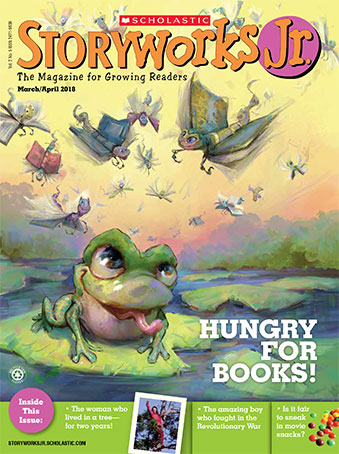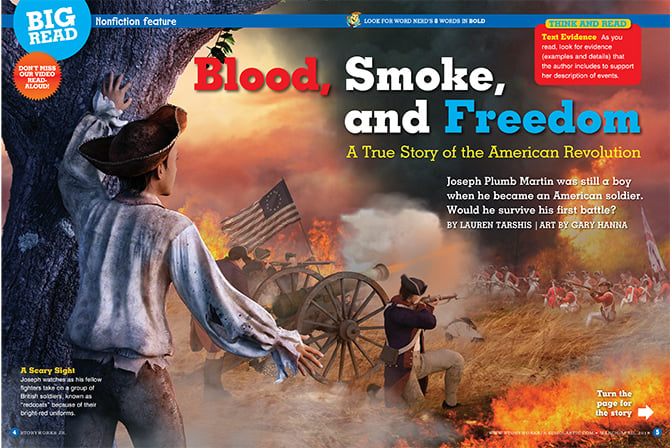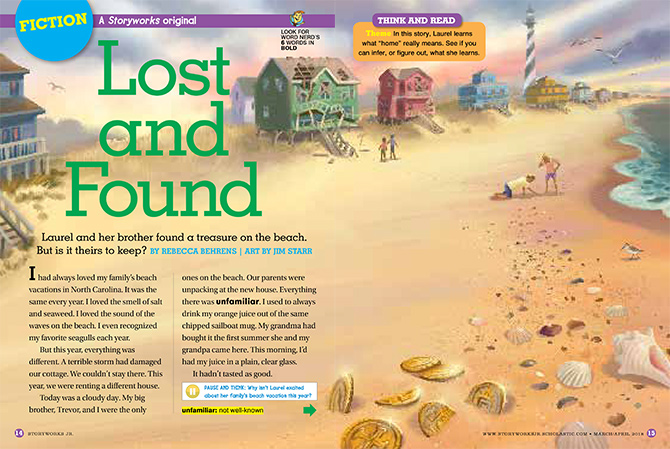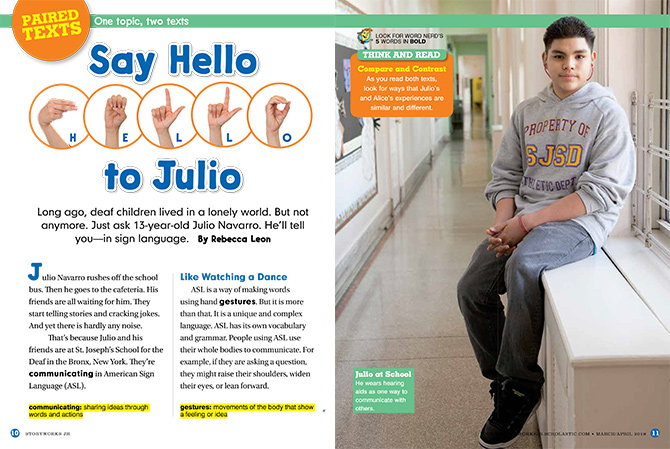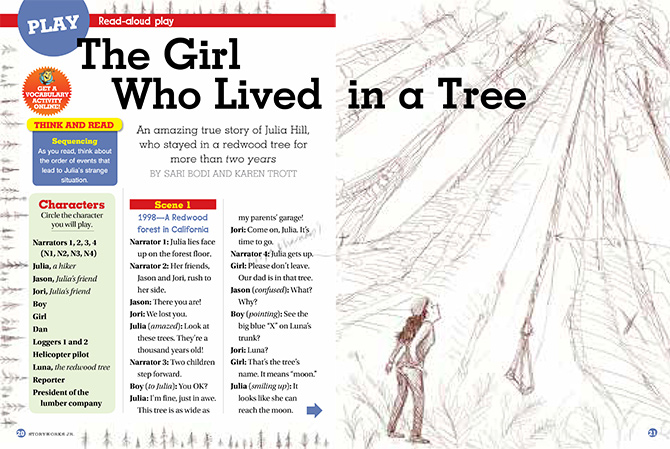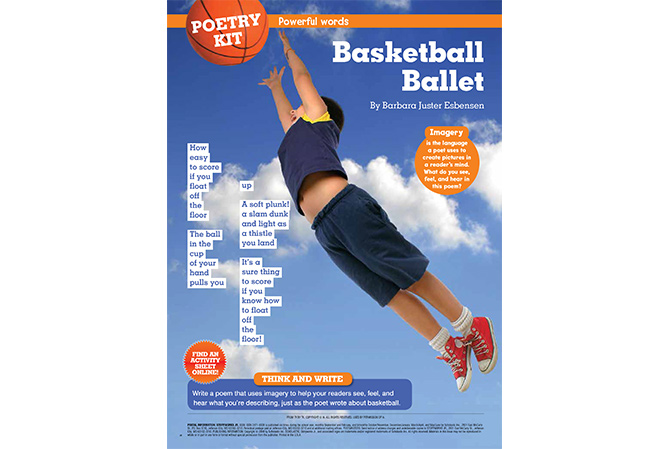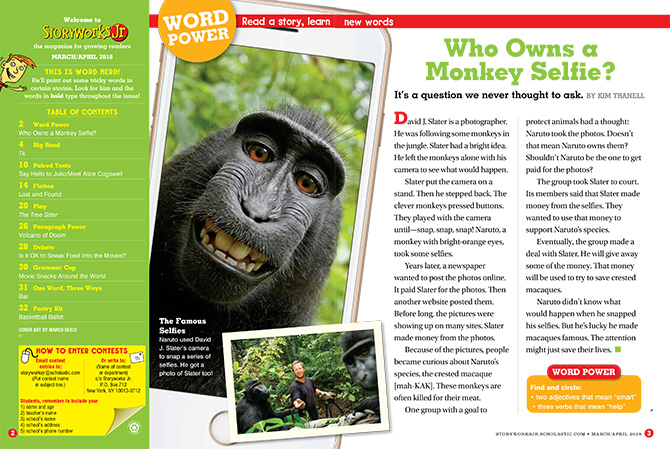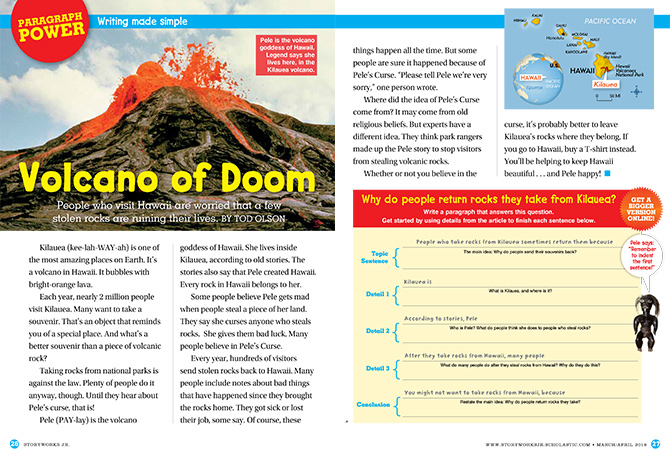Historical Reenactments
When you watch our Video Read Aloud, point out that the war footage comes from war reenactments. Explain that reenactors are people so fascinated by a certain time in history, they’ll put lots of effort into recreating it. They’ll wear the clothing of that time (or the closest they can get to it), they’ll eat the food from that time, and even fight the battles of that time, with old-fashioned weapons. And it’s not just for adults—there are children’s programs where kids learn and practice games and chores of the Revolutionary era!
Further Reading
Two books will keep the learning going: George vs. George: The American Revolution as Seen From Both Sides is filled with colorful, detailed illustrations and authentic quotes. You Wouldn’t Want to be an American Colonist!, with its humorous take on the era, is praised for being ideal for reluctant readers.
Life in Colonial America
Don’t miss our Time Machine video about what life was like in colonial America! After reading the story and watching the video, ask students: What was it like living in the time of the Revolutionary War? Would you want to live back then? Why or why not? These questions can also serve as writing prompts.
No More Kings!
Leave it to Schoolhouse Rock to come up with a video that sums up why the colonists wanted to have “No More Kings” and fight the British in 3 catchy minutes.
Child Soldiers
Students might be surprised to learn that Joseph wasn’t the youngest of the American soldiers during the Revolutionary War. Kids as young as 12 served!
A Virtual Field Trip to the Museum of the American Revolution
Beyond the Battlefield, hosted by I Survived author Lauren Tarshsis, is available for streaming February 7, 2018.

